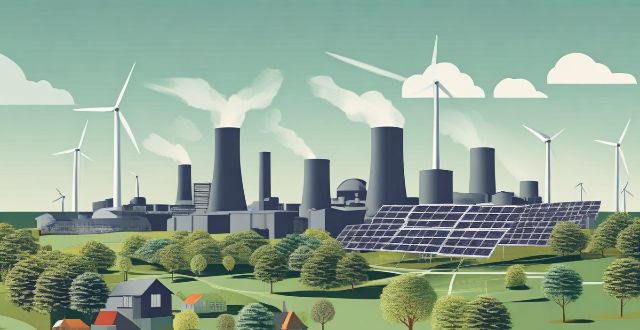The article discusses various alternatives to fossil fuels for energy production, including solar energy, wind energy, hydroelectric power, geothermal energy, biomass energy, and nuclear energy. It explains the working principles of each alternative and their advantages and disadvantages. The main advantage of these alternatives is that they produce clean energy with minimal greenhouse gas emissions, reducing the impact on the environment and climate change. However, some of them require significant investment and infrastructure development, while others have safety concerns or limited availability. Overall, the article highlights the potential of these alternatives in providing sustainable and reliable sources of energy for the future.

Alternatives to Fossil Fuels for Energy Production
Fossil fuels, such as coal, oil, and natural gas, have been the primary sources of energy for many years. However, their use has led to environmental concerns, including air pollution and climate change. As a result, there is an increasing need to find alternatives to fossil fuels for energy production. In this article, we will explore some of the most promising alternatives.
Solar Energy
Solar energy is one of the most popular alternatives to fossil fuels. It involves harnessing the power of the sun to generate electricity or heat. There are two main types of solar energy systems: photovoltaic (PV) and thermal.
* Photovoltaic (PV) systems use solar panels to convert sunlight into electricity.
* Thermal systems use mirrors or lenses to focus sunlight onto a receiver, which then heats a fluid that generates steam to drive a turbine and produce electricity.
Wind Energy
Wind energy is another alternative to fossil fuels. It involves using wind turbines to capture the kinetic energy of the wind and convert it into electricity. Wind turbines can be installed on land or offshore, depending on the location and availability of wind resources.
Hydroelectric Power
Hydroelectric power is generated by harnessing the energy of flowing water. This can be done through various methods, including:
* Building dams across rivers to create reservoirs, which are then used to generate electricity through turbines and generators.
* Installing small-scale hydroelectric systems in streams or rivers without the need for large infrastructure projects.
Geothermal Energy
Geothermal energy is produced by tapping into the Earth's internal heat. This can be done through various methods, including:
* Using steam from geyser fields or hot springs to generate electricity.
* Drilling deep wells into hot rocks and extracting heat through a process called enhanced geothermal systems (EGS).
Biomass Energy
Biomass energy involves using organic materials, such as wood, crops, and waste, to produce heat and electricity. There are several ways to generate biomass energy, including:
* Burning biomass directly in boilers or furnaces to produce heat.
* Gasifying biomass to produce a combustible gas that can be used for heating or generating electricity.
* Anaerobically digesting organic waste to produce biogas, which can be used for heating or generating electricity.
Nuclear Energy
Nuclear energy is produced by splitting atoms in a process called nuclear fission. While controversial due to safety concerns and waste disposal issues, nuclear energy has the potential to provide a significant amount of clean energy with minimal greenhouse gas emissions. However, it requires strict regulation and oversight to ensure safety and security.